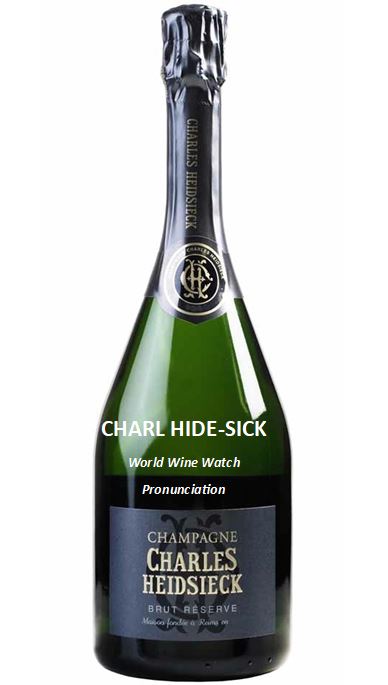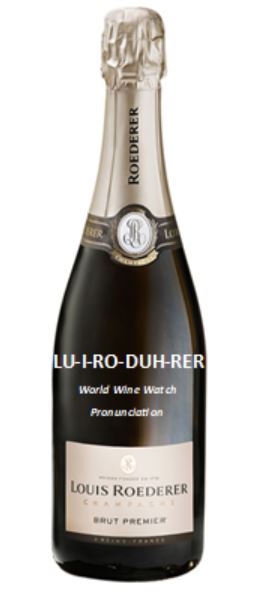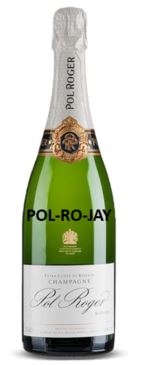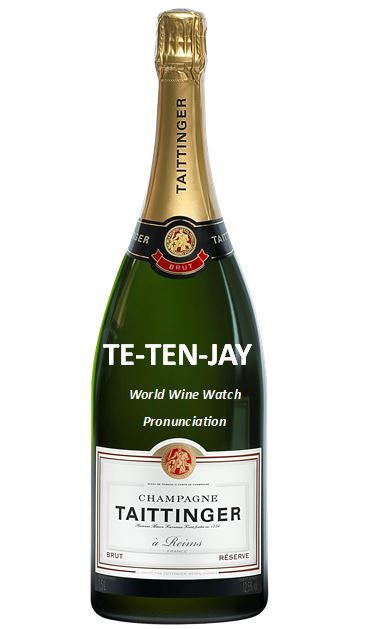By Nicki Bourlioufas
With Champagne consumption increasing around the globe, the time is ripe for a guide for non-French speakers to master, or at least improve, the pronunciation of some of the more commonly sold Champagne brands. Corks will be popping too in Australia this Christmas after last year’s sobriety and extended lockdowns.
One thing is true about Champagne, and indeed the whole French language, for English speakers, some words are nearly impossible to pronounce correctly. French has some difficult-to-master nasal sounds and mouth moves, but with instruction, you can aim to get it. The French also find English difficult because English too has many silent consonants. So, French native speakers might well say touché!
So, here’s a start for the enthusiastic learner. With the help of this video from Julien Miguel, a French wine and language expert, this guide can go a long way to help improve your pronunciation. I’ve used English sounds besides the French names so you can pronounce the brand names a little more accurately, if you’re not there already.
Bollinger – BO-LAN-JAY
Two things to know here: ‘ge’ in French sounds like ‘j’ and ‘in’ sounds like the ‘an’ in lane. Even James Bond got the pronunciation of his favourite bubbles wrong in this film. We can all do better than Bond by following this guide. At the end, you say ‘ay’ rather then ‘er’, as you would with Taittinger (sounds like TE-TEN-JAY).
Billecart Salmon – BEE-LER-CAR SAL-MO


Silent ‘t’ and ‘n’ here at the end of each name; as with many French words, you don’t sound the consonant at the end of a word. And the ‘e’ in French is sounds ‘er’.
Charles Heidsieck – CHARL HIDE-SICK
The ‘s’ is silent at the end of Charles and ‘Ch’ in French is always ‘sh’. You need to say the ‘k’ at the of end Heidsieck because the name’s origin is German and in German, you pretty much pronounce any consonant, the opposite of French.
Note that ‘ei’ in French sounds like the long ‘i’ vowel sound. It’s a diphthong, where two vowels combine to form a single vowel sound. In contrast, the ‘i’ in sieck has a short vowel ‘i’ sound.
Dom Perignon – DOM PE-RI-NYON
This one is pretty easy. The ‘gn’ sounds like ’n’ in onion. You pronounce the ‘m’ too, but not too much.
Krug – KRUG
It’s also a German name, so phonetic; you say the ‘g’ at the end of the name. Even better, it’s one syllable (some German words can be really long!). The ‘u’ is a bit tricky, a lit like ‘oo’ but we don’t exactly have the vowel sound in English.
Lanson – LAN-SON
Mercifully, it’s relatively easy too. The ‘son’ sounds like ‘son’ in “song” – and while you say the ‘n’, it’s subtle.
Laurent Perrier – LO-RON PE-RI-AY


Here, the ‘au’ sounds like short vowel sound ‘o’ and ‘en’ sounds like long vowel ‘o’. At the end of Laurent, don’t’ say the ‘t’. At the end of Perrier, you say ‘ay’ rather then ‘er’, as you would with Bollinger or Taittinger.
Louis Roederer – LU-I-RO-DUH-RER
No ‘s’ in Louis, and roll the ‘r’ a little at the end of Roederer. And you do say ‘er’ at the end of Roederer, ‘not ‘ay’ as you would with Bollinger or Taittinger.
This house is the famous producer of one of the most prestigious cuvee, Cristall – KRIST-AL.
Moët & Chandon – MO-WETT & SHAN-DON
There is much debate about whether you pronounce the ‘t’ in Moët – according to Miquel, you do pronounce the ‘t’. Why this apparent anomaly? The founder of the famous champagne house was named Claude Moët. Whilst he was born in France in 1683, the origin of his name was Dutch, where the ‘t’ would be pronounced. So, you should say it, and also say the ‘n’ at the end of Chandon. Watch this video here.
Having said that, the French are more familiar with Moët pronounced without the ‘t’ because very few stick to the Dutch origins, and it is a French brand, after all. So, whether you say mo-wee or mo-wett, I think you’re safe from ridicule either way. Better to focus on some of the more difficult Champagne names.
MUMM – MOOM
Again, it’s not complicated because it’s a German name, so more phonetic. It sounds like ‘Moom’, and rhymes with “bloom”, according to G.H. Mumm brand ambassador with Pernod Ricard, Emmanuel de Madre (a sweet twist, madre in Italian means ‘mum’!).
Nicolas Feuillatte NI-CO-LA FOY-YE-AT
This name is a challenge, and you probably couldn’t possibly get it without some instruction.
You do not pronounce the ‘s’ at the of Nicolas. Note also, Feu sounds like ‘foy’, which rhymes with boy. Then, folllowing that, the double ‘l’ in French sound is difficult, no doubt about it. It’s similar to the long vowel ‘e’ sound, but with a ‘y’ in front, so it more like ‘yeah’. So if you see the word ‘fille’, for girl, don’t say fill, or filly!! It sounds more like fyeah.
Finally, at the end of Feuillatte, there are two ts ‘tt’ followed by an ‘e’, so you do say the t at the end of the word.
Perrier-Jouët PE-RI-AY JU-ETT
Another exception to the rule here, you say the ‘t’ at the end of Jouët because of the double dots on the ‘e’. Again, ‘er’ in French sounds like ‘ay’ – same as Bollinger. Remember, Bo-lan-jay!
Piper Heidsieck PI-PER HIDE-SICK
We English say Pie-per. But that’s not right. You don’t make the long vowel ‘i’ sound in French when you see an ‘i’, just the short vowel ‘i’ sound. And use it here. Heidsieck, as mentioned, is a German name, so you say all the consonants!


Pol Roger POL – RO- JAY
Don’t say Roger! Again, ‘er’ sounds like ‘ay’, as in bay.
Pommery – PO-ME-RI
Finally, you can say it as it’s written! Y sounds like ‘i’ as it does in English.
Taittinger – TE-TEN-JAY


Regularly seen as a product placement in Netflix’s popular Emily in Paris series, where the difficulties of French pronunciation are closely examined, Taittinger is especially mispronounced. It’s important to know that ‘ai’ in French = ‘e’.
Apparently the Taittinger family, which still owns the brand, has gotten used to the mispronunciation and are flexible with the way their name is said. But it sounds so good when people get it right!
Ruinart – RU-IN-ARR
Roll the r a little. Silent ‘t’ is important!
Veuve Clicquot VERVE KLI-KOH
Silent ‘t’ again! This one isn’t so hard.
